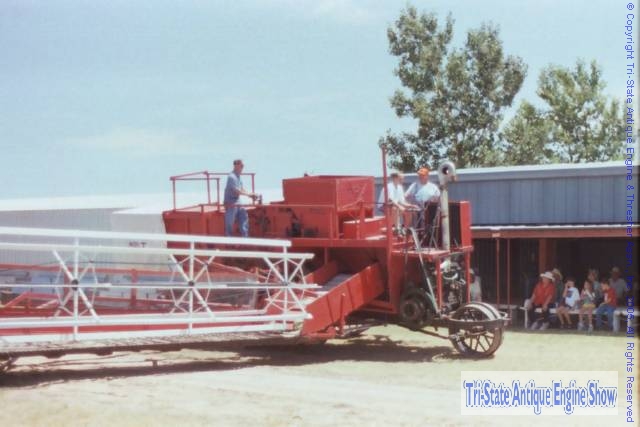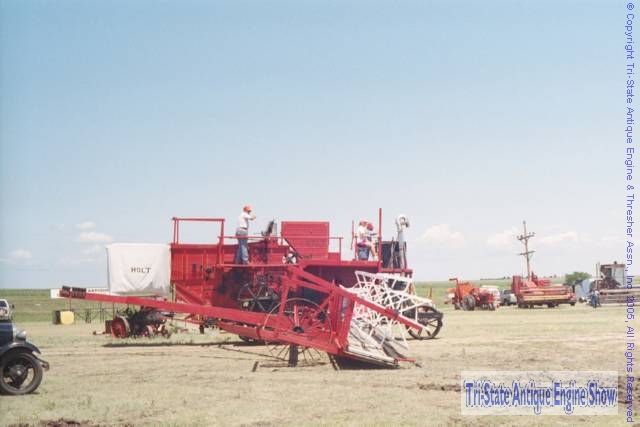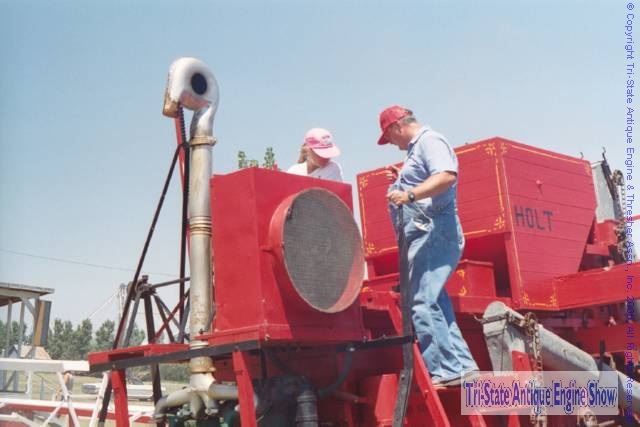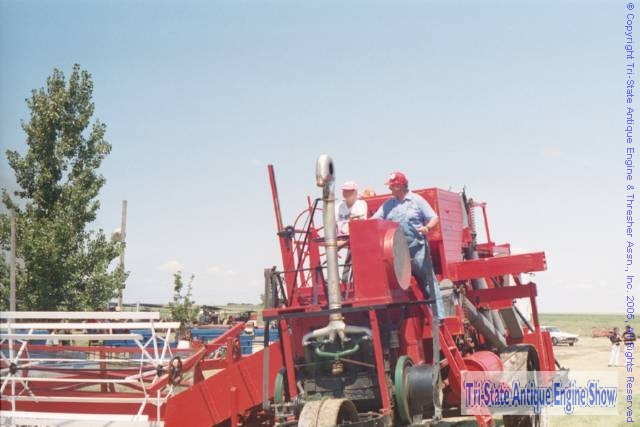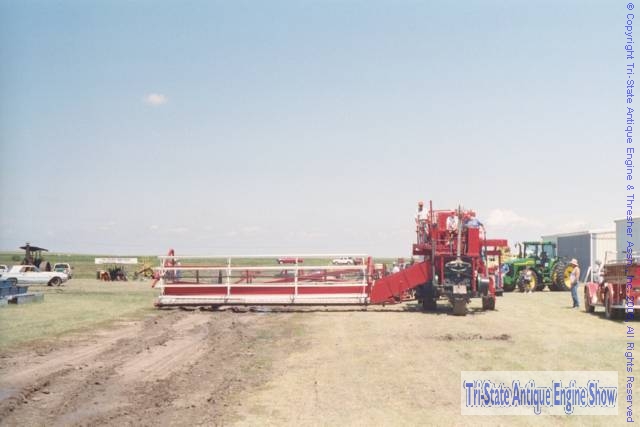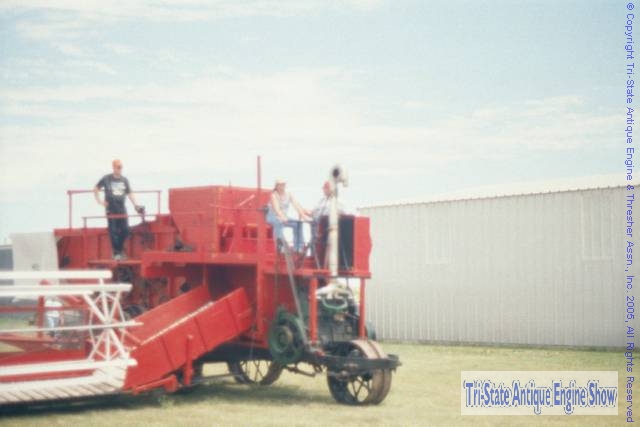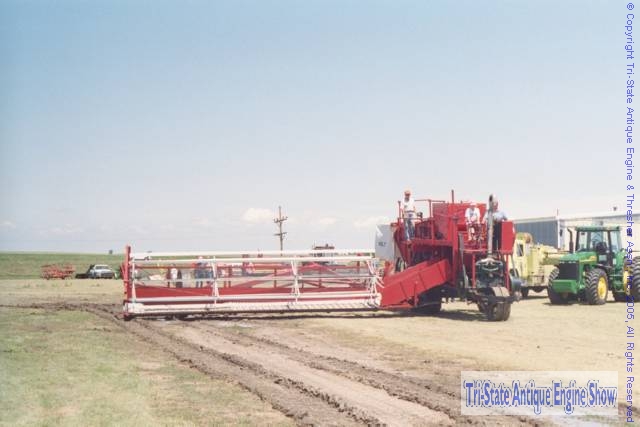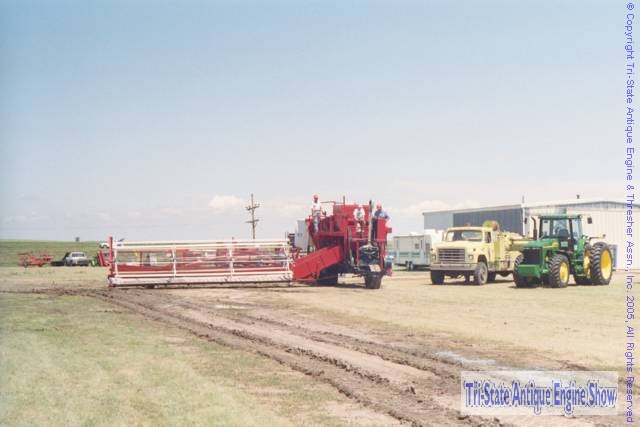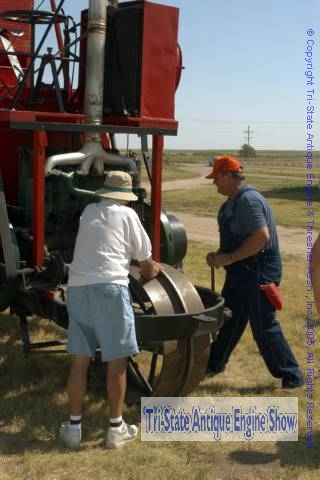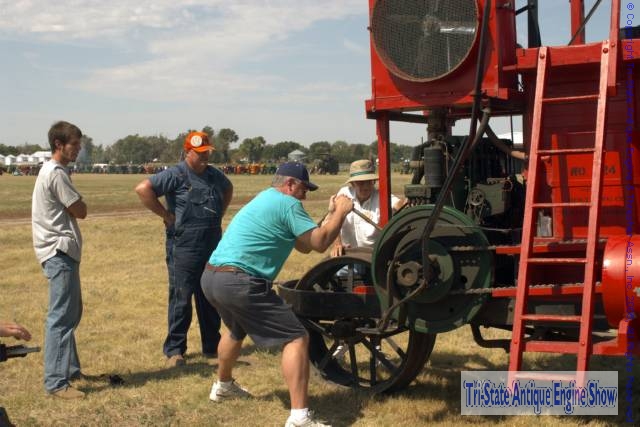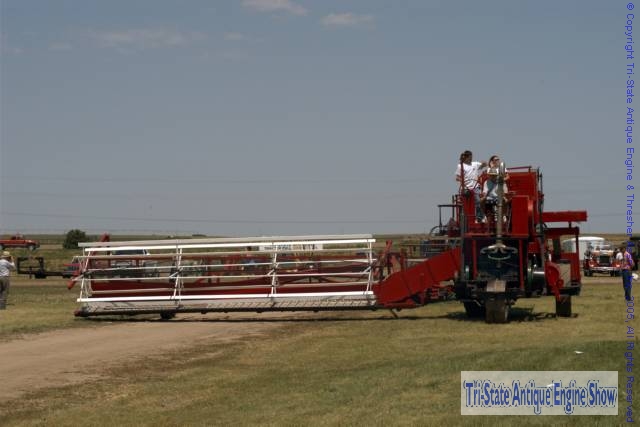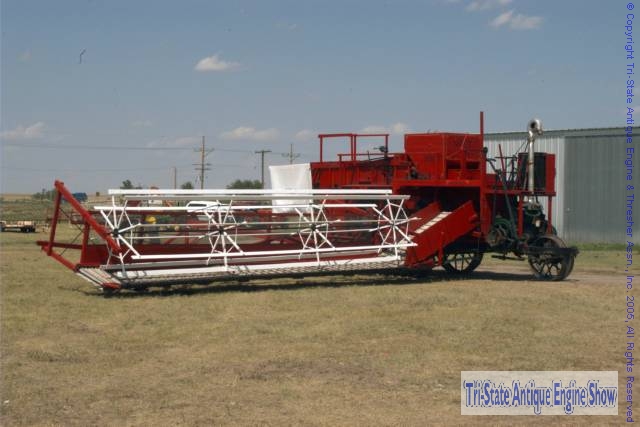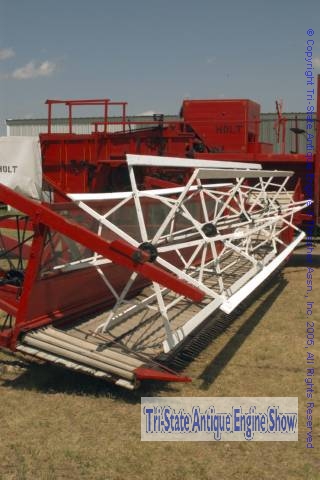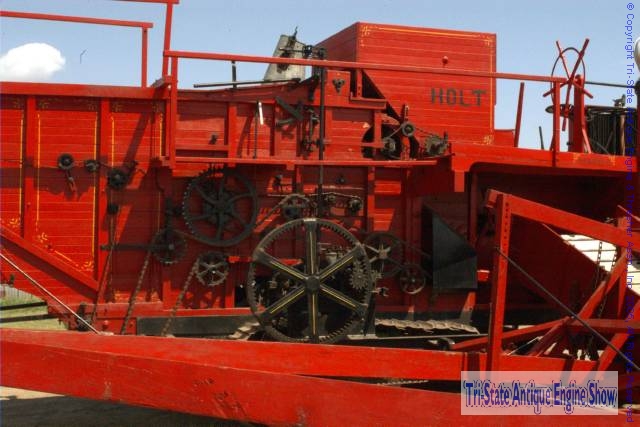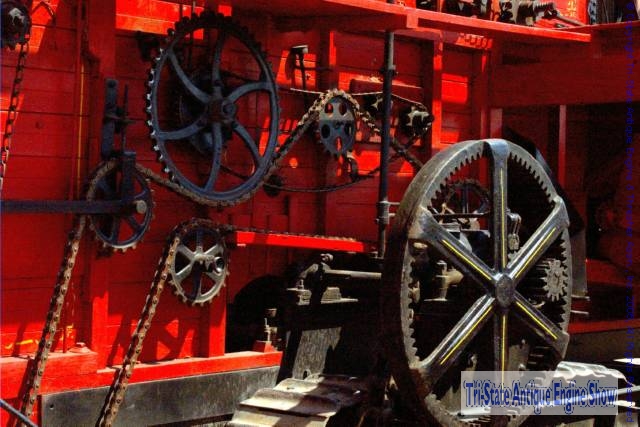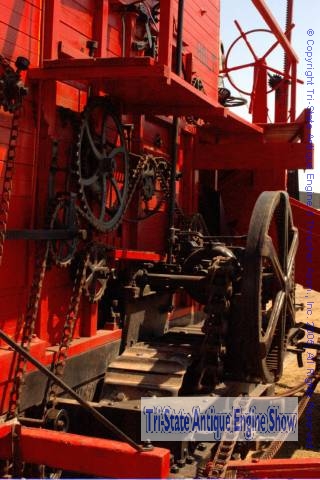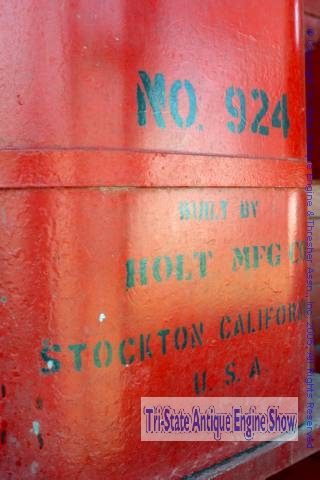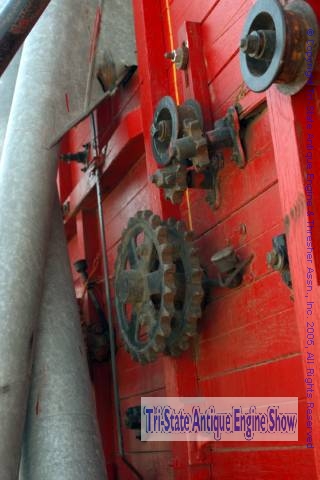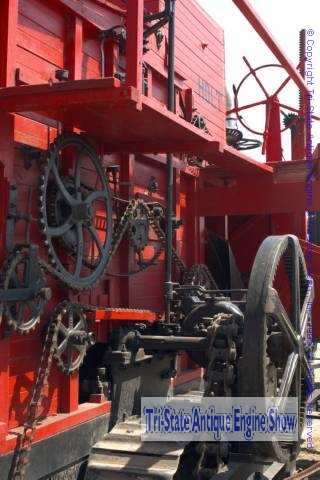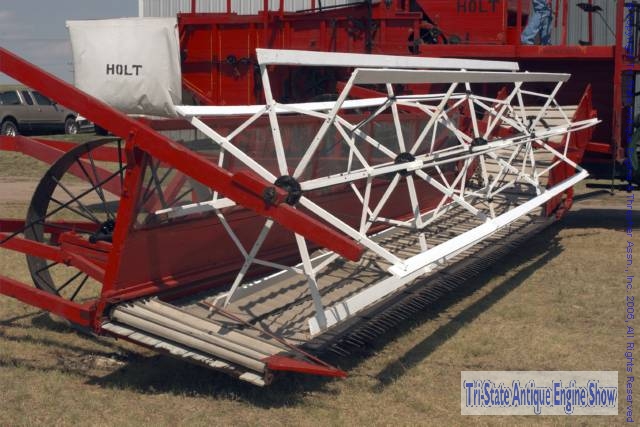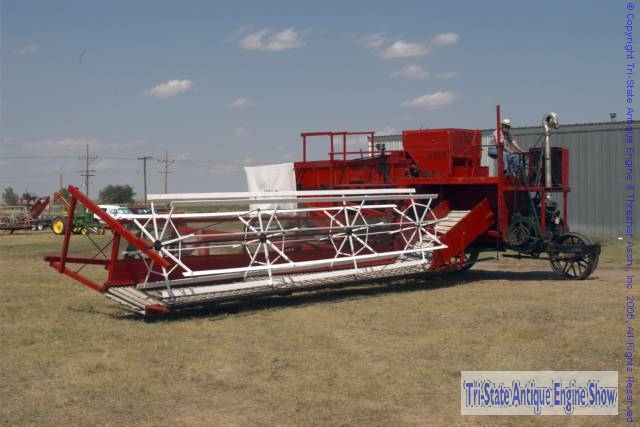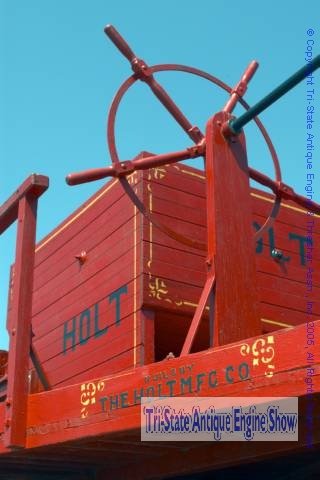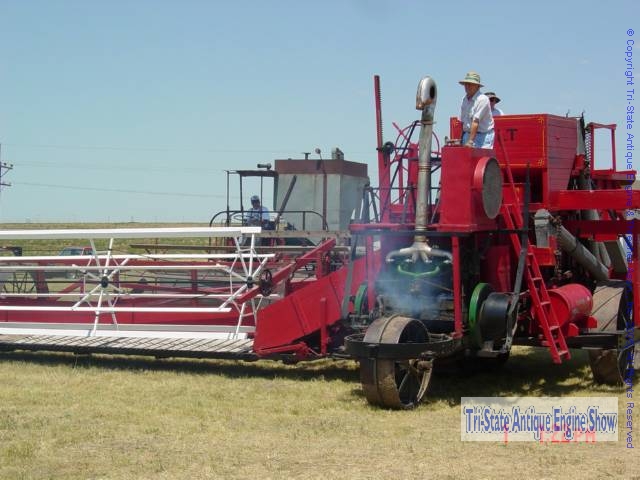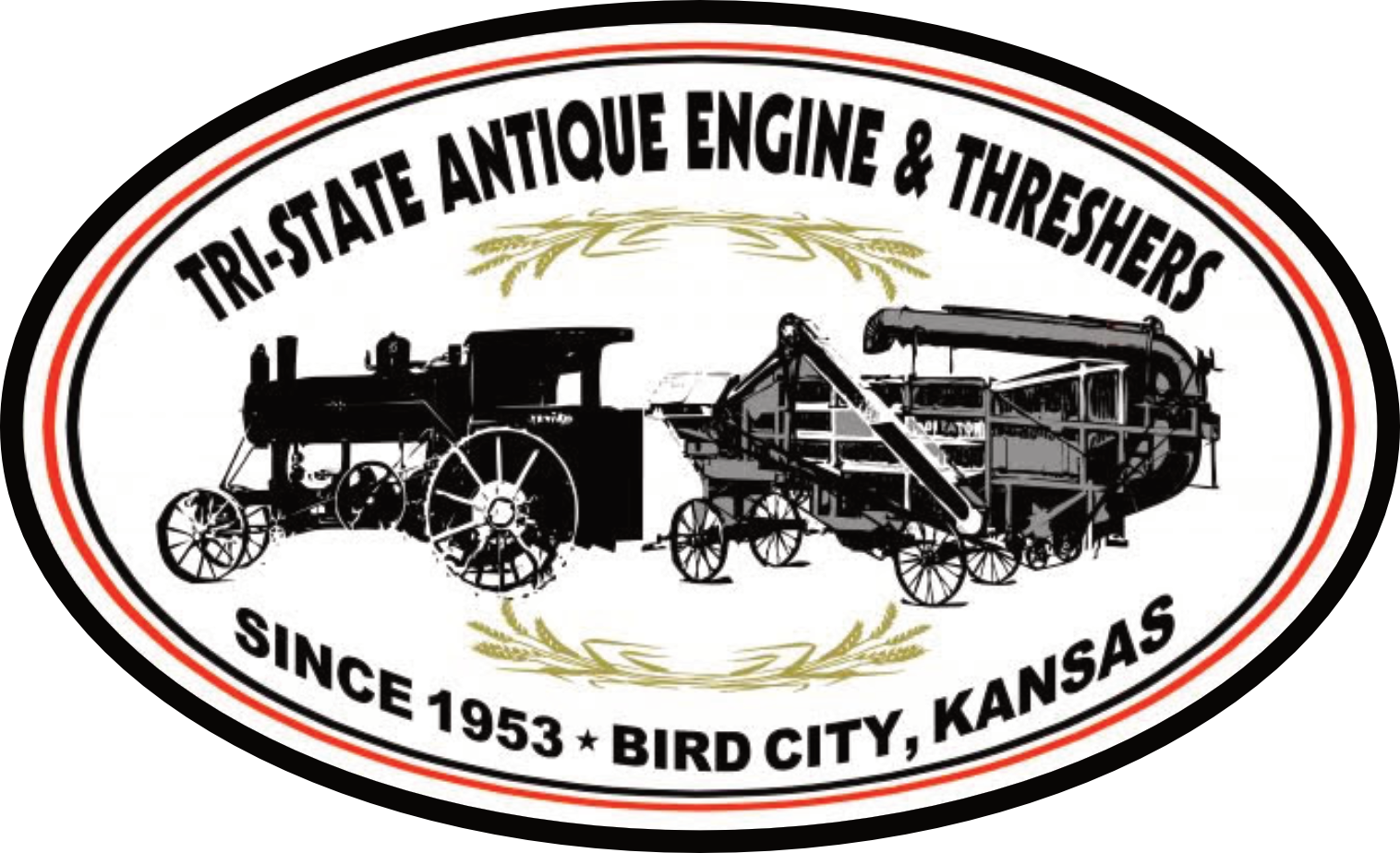Celebrating 100 years of the Holt Combine
The breadbasket of America, Kansas has long prided itself on the massive wheat fields that sweep across the state in July. About the time that most Kansas farmers are storing away the combines that churn through the state’s golden fields, the Bird City Threshers are unlocking the doors to the past when they pull out their 1922 Holt self-Propelled combine. The Holt is a jewel of the Show and one of the rarest Pieces of Antique harvesting equipment in america. The Bird City Holt is one of the only three known and is believed to be the only one that is fully operational.
“It was an amazing project” recalls Bob Jones, Association member and one of the crew who helped restore the Holt in the early 1990’s. We had a big old sack of peanuts in the shop and everyone, and I mean everyone, would come down and drink pop, eat peanuts and work on the Holt.”
The Holt was built in 1922 in Stockton, California. Bearing serial number 924, it was shipped by rail to McDonald, Kansas, in April of ‘22, along with two others. The combine’s original owners, Lou and Henry Antholtz, McDonald, Kansas, operated the rig in wheat and barley fields for several decades. The Holt was donated to the Association by the Aubrey “Bus” Briney family in the 1980’s. Several years of extensive and expensive restoration were required to bring the Holt to its current condition.
“More people probably worked on the combine than any other project, because it went on for quite a while,” Jones says. After scraping the grease and grime off the old wood, the workers applied 12 gallons of red paint, two gallons of black paint and one gallon of gold paint. Hal Sager, master of ceremonies, likes to tell the story of the machine’s fine craftsmanship discovered during the restoration. “There are no knotholes in all that wood, whatsoever,” Sager says. “It is all number- one wood. Ernie Kehlbeck painted most of the red you see on the combine, and even though he had just about as much red paint on his overalls as in on the Holt, he never did find any flaws in the wood.”
The combine has a Caterpillar-type track drive mechanism (Holt was the predecessor to the Caterpillar company), a 24-foot header bar and requires five men to operate. Bob Jones has enjoyed driving the combine in the Show’s daily parade for many years. “I don’t really know how I got that job, but I enjoy it,” he says. “It’s kind of a temperamental old thing – you have to get everything just right to get it to start. Then, once you’re going, it’s tough to turn.” In 2003, Jones enlisted his grandson, Brian Haack, to apply the necessary muscle to the steering wheel. “He loved it,” Jones reportes. Such a transfer of mechanical know-how for the old machines is part of what is necessary to keep the Show alive for another generation.
For several years in the early 1990’s =, the Holt was featured in the Show’s harvesting equipment parade, which includes (in order of appearance in the history of harvesting) a sickle, a scythe, a horse-drawn reaper head, a binder, a steam engine and threshing machine, the Holt, a tractor-drawn combine, a model 20 Massey Harris self-propelled combine with canvas platform, and a six-foot model 40 John Deere pull-type combine. Perhaps the most photographed piece of equipment at the Show, the Holt is an Association treasure that continues to astound visitors with its size and the technological advancement displayed as it rumbles along during the daily parade.
Copied from Fifty Years: Celebrating & Preserving an American Framing Tradition. A History of the Tri-State Antique Engine & Threshers Association, Bird City, KS Published 2004
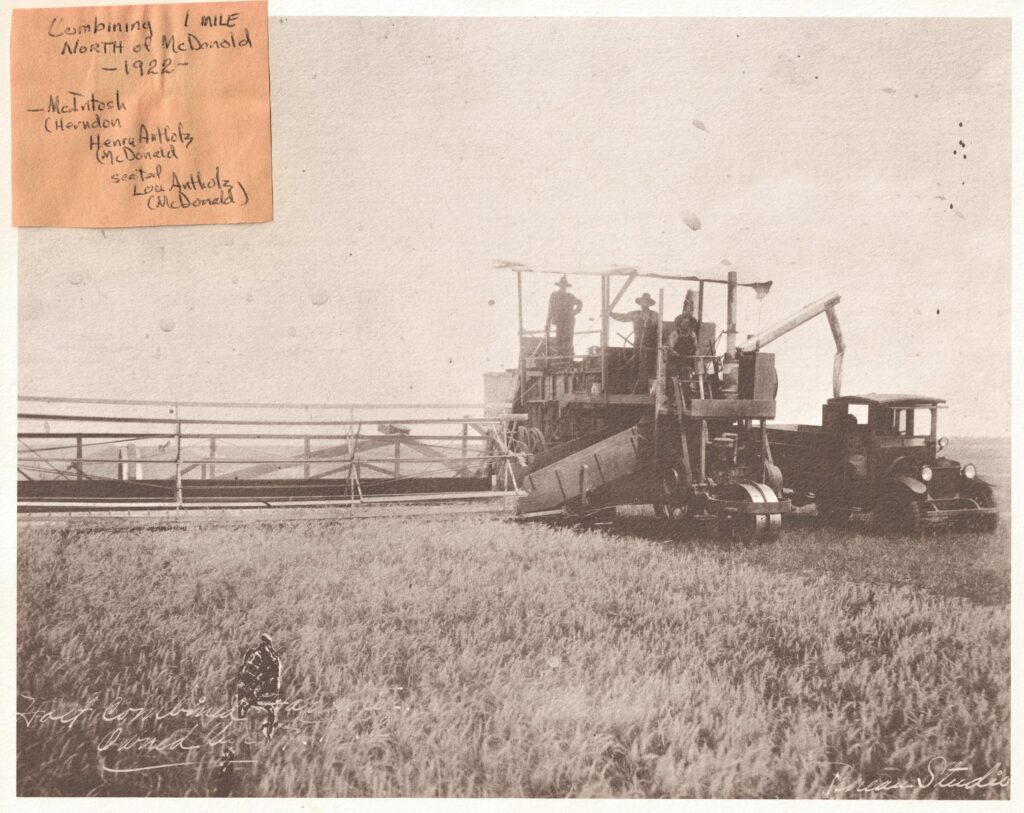
Pictured Left to right: – McIntosh, Henry Antholz, Lou Antholtz


